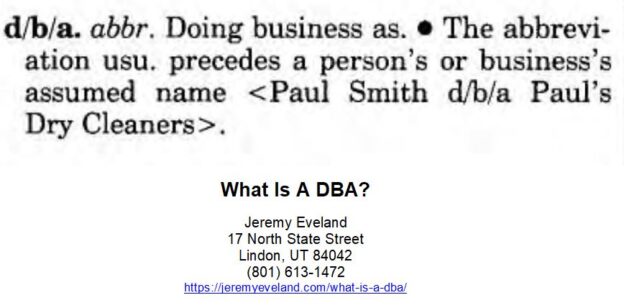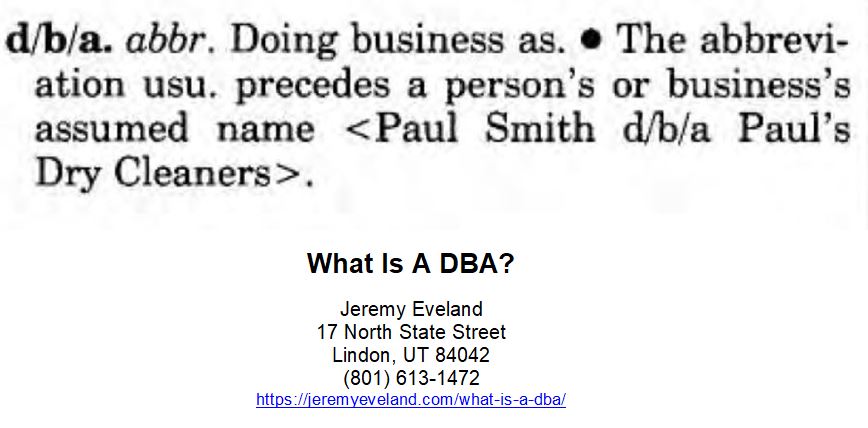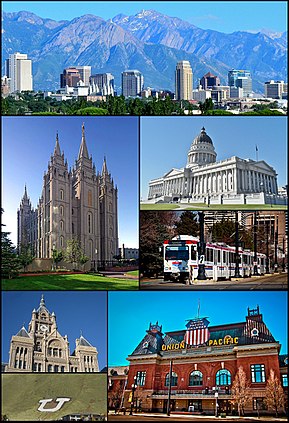Business Law and Taxes
-
Taxes and Business
- Introduction
- Analyzing the Impact of Inflation on Business Taxes
- Exploring the Impact of the Tax Cuts and Jobs Act (TCJA) on Businesses
- Navigating the Tax Implications of LLCs and Corporations
- Exploring the Different Types of Business Structures and Their Tax Implications
- Understanding the Basics of Business Taxation
- Employer Taxes on Employee Income
- Resolve Delinquent Tax Debt With a Tax Lawyer
- Q&A
“Navigating Business Law and Taxes: Your Guide to Success!”
Introduction
Business law and taxes are two of the most important aspects of running a successful business. Business law is the body of laws that govern the formation, operation, and dissolution of businesses. It covers a wide range of topics, including contracts, torts, property, and labor law. Taxes are the money that businesses must pay to the government in order to operate legally. They are used to fund public services and infrastructure, and are an important source of revenue for the government. Understanding business law and taxes is essential for any business owner, as it can help them to avoid costly legal issues and ensure that they are compliant with all applicable laws and regulations.
Analyzing the Impact of Inflation on Business Taxes
Inflation is an important economic factor that can have a significant impact on business taxes. Inflation is a sustained increase in the general level of prices for goods and services, and it can have a direct effect on the amount of taxes businesses must pay. This article will discuss the impact of inflation on business taxes and provide strategies for businesses to manage their tax liabilities in an inflationary environment.
Inflation affects business taxes in two primary ways. First, it can cause the value of a business’s assets to increase, resulting in higher taxes on those assets. For example, if a business owns a building that appreciates in value due to inflation, the business will be required to pay taxes on the increased value of the building. Second, inflation can cause the value of a business’s income to increase, resulting in higher taxes on that income. For example, if a business earns income in a currency that is subject to inflation, the business will be required to pay taxes on the increased value of that income.
Businesses can manage their tax liabilities in an inflationary environment by taking advantage of tax deductions and credits. For example, businesses can take advantage of deductions for capital investments, such as the purchase of new equipment or the expansion of a facility. Additionally, businesses can take advantage of credits for research and development expenses, as well as credits for hiring new employees.
In addition to taking advantage of deductions and credits, businesses can also manage their tax liabilities by taking steps to reduce their taxable income. For example, businesses can reduce their taxable income by deferring income or by taking advantage of tax-advantaged investments, such as retirement accounts. Additionally, businesses can reduce their taxable income by taking advantage of tax-exempt investments, such as municipal bonds.
Finally, businesses can manage their tax liabilities by taking steps to reduce their tax rate. For example, businesses can take advantage of tax credits for hiring new employees or for making capital investments. Additionally, businesses can reduce their tax rate by taking advantage of tax incentives, such as those offered by the federal government for businesses that invest in certain industries or regions.
In conclusion, inflation can have a significant impact on business taxes. Businesses can manage their tax liabilities in an inflationary environment by taking advantage of deductions and credits, reducing their taxable income, and reducing their tax rate. By taking these steps, businesses can ensure that they are paying the appropriate amount of taxes in an inflationary environment.
Exploring the Impact of the Tax Cuts and Jobs Act (TCJA) on Businesses
The Tax Cuts and Jobs Act (TCJA) of 2017 was a major overhaul of the U.S. tax code, and it had a significant impact on businesses. The TCJA reduced the corporate tax rate from 35% to 21%, and it also made changes to the taxation of pass-through entities, such as partnerships and S corporations. Additionally, the TCJA created new deductions for certain types of businesses, such as those in the manufacturing sector.
The reduction in the corporate tax rate has been a major benefit for businesses. By lowering the rate, businesses are able to keep more of their profits and reinvest them in their operations. This has allowed businesses to expand their operations, hire more employees, and increase wages. Additionally, the lower rate has made the U.S. a more attractive place to do business, which has led to an influx of foreign investment.
The TCJA also made changes to the taxation of pass-through entities. These entities are taxed at the individual rate, which was lowered from 39.6% to 37%. This has allowed pass-through entities to keep more of their profits and reinvest them in their operations. Additionally, the TCJA created a new deduction for pass-through entities, which allows them to deduct up to 20% of their qualified business income. This has been a major benefit for small businesses, as it has allowed them to keep more of their profits and reinvest them in their operations.
The TCJA also created new deductions for certain types of businesses, such as those in the manufacturing sector. These deductions allow businesses to deduct up to 20% of their qualified business income. This has been a major benefit for businesses in the manufacturing sector, as it has allowed them to keep more of their profits and reinvest them in their operations.
Overall, the Tax Cuts and Jobs Act has had a significant impact on businesses. The reduction in the corporate tax rate has allowed businesses to keep more of their profits and reinvest them in their operations. Additionally, the changes to the taxation of pass-through entities and the new deductions for certain types of businesses have been major benefits for businesses. These changes have allowed businesses to expand their operations, hire more employees, and increase wages.
Navigating the Tax Implications of LLCs and Corporations
When it comes to business structures, LLCs and corporations are two of the most popular options. Both offer advantages and disadvantages, and it is important to understand the tax implications of each before making a decision.
LLCs, or limited liability companies, are a popular choice for small businesses. LLCs are relatively easy to set up and offer the benefit of limited liability protection, meaning that the owners are not personally liable for the debts and obligations of the business. LLCs are also pass-through entities, meaning that the business itself does not pay taxes. Instead, the profits and losses are passed through to the owners, who report them on their individual tax returns.
Corporations, on the other hand, are more complex and expensive to set up. They offer the same limited liability protection as LLCs, but they are also subject to double taxation. This means that the corporation itself pays taxes on its profits, and then the shareholders pay taxes on any dividends they receive.
When it comes to taxes, LLCs and corporations have different implications. LLCs are generally simpler and more tax-friendly, while corporations are more complex and subject to double taxation. It is important to understand the tax implications of each before making a decision. With the right advice, you can make an informed decision that is best for your business.
Exploring the Different Types of Business Structures and Their Tax Implications
When starting a business, it is important to understand the different types of business structures and their associated tax implications. Each structure has its own advantages and disadvantages, and the tax implications vary depending on the structure chosen. This article will provide an overview of the different types of business structures and their associated tax implications.
The most common types of business structures are sole proprietorships, partnerships, limited liability companies (LLCs), and corporations. Each of these structures has its own advantages and disadvantages, and the tax implications vary depending on the structure chosen.
Sole proprietorships are the simplest and most common type of business structure. They are owned and operated by one person, and the owner is personally liable for all debts and obligations of the business. The income of a sole proprietorship is reported on the owner’s personal tax return, and the business is subject to self-employment taxes.
Partnerships are owned and operated by two or more people. The partners are personally liable for all debts and obligations of the business, and the income of the partnership is reported on the partners’ personal tax returns. The business is subject to self-employment taxes, and the partners may also be subject to additional taxes depending on the type of partnership.
Limited liability companies (LLCs) are a hybrid structure that combines the limited liability of a corporation with the pass-through taxation of a partnership. The owners of an LLC are not personally liable for the debts and obligations of the business, and the income of the LLC is reported on the owners’ personal tax returns. The business is subject to self-employment taxes, and the owners may also be subject to additional taxes depending on the type of LLC.
Corporations are owned by shareholders and are separate legal entities from their owners. The shareholders are not personally liable for the debts and obligations of the business, and the income of the corporation is reported on the shareholders’ personal tax returns. The business is subject to corporate income taxes, and the shareholders may also be subject to additional taxes depending on the type of corporation.
In conclusion, it is important to understand the different types of business structures and their associated tax implications when starting a business. Each structure has its own advantages and disadvantages, and the tax implications vary depending on the structure chosen. It is important to consult with a qualified tax professional to ensure that the structure chosen is the best fit for your business.
Understanding the Basics of Business Taxation
Business taxation is an important part of running a successful business. Understanding the basics of business taxation can help you make informed decisions about your business and ensure that you are compliant with the law.
Businesses are subject to taxation at both the federal and state levels. The federal government taxes businesses on their income, while states may also impose taxes on businesses based on their profits, sales, or other factors. Depending on the type of business you operate, you may be subject to different types of taxes.
Income taxes are the most common type of business tax. Businesses are required to pay taxes on their profits, which are calculated by subtracting expenses from revenue. Businesses may also be subject to payroll taxes, which are taxes on wages paid to employees. Self-employed individuals may also be subject to self-employment taxes.
Businesses may also be subject to sales taxes, which are taxes on the sale of goods and services. Depending on the state, businesses may be required to collect sales taxes from customers and remit them to the state. Businesses may also be subject to property taxes, which are taxes on the value of real estate owned by the business.
Finally, businesses may be subject to excise taxes, which are taxes on specific goods or services. Excise taxes are typically imposed on items such as alcohol, tobacco, and gasoline.
Understanding the basics of business taxation can help you make informed decisions about your business and ensure that you are compliant with the law. It is important to consult with a tax professional to ensure that you are aware of all applicable taxes and that you are filing your taxes correctly.
Employer Taxes on Employee Income
Employers are responsible for withholding taxes from their employees’ wages and remitting them to the appropriate government agencies. This includes federal income tax, Social Security tax, and Medicare tax.
Federal income tax is based on the employee’s filing status and the amount of taxable income they earn. Employers must withhold the appropriate amount of federal income tax from each employee’s wages based on the information provided on their Form W-4.
Social Security and Medicare taxes are also known as FICA taxes. Employers must withhold 6.2% of each employee’s wages for Social Security tax and 1.45% for Medicare tax. Employers are also responsible for matching the employee’s contributions, meaning they must pay an additional 6.2% for Social Security tax and 1.45% for Medicare tax.
Employers must also pay unemployment taxes to the state. The rate of unemployment tax varies by state, but employers must pay a percentage of each employee’s wages to the state unemployment fund.
Employers must also pay state and local taxes, such as state income tax and local income tax. The rate of these taxes varies by state and locality.
Finally, employers must also pay workers’ compensation insurance premiums. This insurance covers medical expenses and lost wages for employees who are injured on the job. The rate of workers’ compensation insurance premiums varies by state.
In summary, employers are responsible for withholding and remitting taxes from their employees’ wages, as well as paying unemployment taxes, state and local taxes, and workers’ compensation insurance premiums.
Resolve Delinquent Tax Debt With a Tax Lawyer
If you are facing delinquent tax debt, it is important to understand your options and take the necessary steps to resolve the issue. One of the best ways to do this is to consult with a tax lawyer. A tax lawyer can provide you with the legal advice and guidance you need to understand your rights and obligations under the law and to develop a plan to resolve your delinquent tax debt.
A tax lawyer can help you understand the tax laws and regulations that apply to your situation and can provide you with advice on how to best resolve your delinquent tax debt. They can help you negotiate with the IRS or state tax authority to reduce or eliminate your debt, or to set up a payment plan that works for you. They can also help you understand the potential consequences of not paying your taxes, such as wage garnishment, liens, and other collection actions.
A tax lawyer can also help you understand the various tax relief programs that may be available to you. These programs can help you reduce or eliminate your tax debt, or provide you with other forms of relief. A tax lawyer can help you determine if you qualify for any of these programs and can help you navigate the application process.
Finally, a tax lawyer can provide you with legal representation if you are facing an audit or other legal action from the IRS or state tax authority. They can help you understand your rights and obligations and can represent you in court if necessary.
If you are facing delinquent tax debt, it is important to take action to resolve the issue. Consulting with a tax lawyer can help you understand your rights and obligations and can provide you with the legal advice and guidance you need to develop a plan to resolve your delinquent tax debt.
Q&A
1. What is the difference between business law and taxes?
Business law is the body of law that governs the formation, operation, and dissolution of businesses. It includes laws related to contracts, torts, property, and other areas. Taxes are the money that businesses and individuals are required to pay to the government.
2. What are the different types of business taxes?
The different types of business taxes include income taxes, payroll taxes, sales taxes, property taxes, and excise taxes.
3. What is the purpose of business law?
The purpose of business law is to provide a framework for businesses to operate within, as well as to protect the rights of those involved in business transactions.
4. What are the consequences of not paying taxes?
The consequences of not paying taxes can include fines, penalties, and even jail time.
5. What is the difference between a corporation and a limited liability company (LLC)?
A corporation is a legal entity that is separate from its owners and is owned by shareholders. A limited liability company (LLC) is a business structure that combines the limited liability of a corporation with the flexibility of a partnership.
6. What is the difference between a sole proprietorship and a partnership?
A sole proprietorship is a business owned and operated by one person. A partnership is a business owned and operated by two or more people.
7. What is the difference between a contract and an agreement?
A contract is a legally binding document that outlines the terms and conditions of a business transaction. An agreement is a less formal document that outlines the terms and conditions of a business transaction.
Business Law and Taxes Consultation
When you need legal help with Business Law and Taxes call Jeremy D. Eveland, MBA, JD (801) 613-1472 for a consultation.
Jeremy Eveland
17 North State Street
Lindon UT 84042
(801) 613-1472
Related Posts
Business Contract Lawyer Salt Lake City
What Is The Difference Between Corporate And Commercial Law?
Business Contract Lawyer West Valley City
Business Lawyer West Jordan Utah
Irrevocable Life Insurance Trusts
What Is The Purpose Of A Business Attorney?
Business Transaction Lawyer Provo Utah
Trusted Personal Injury Attorneys in Utah




































